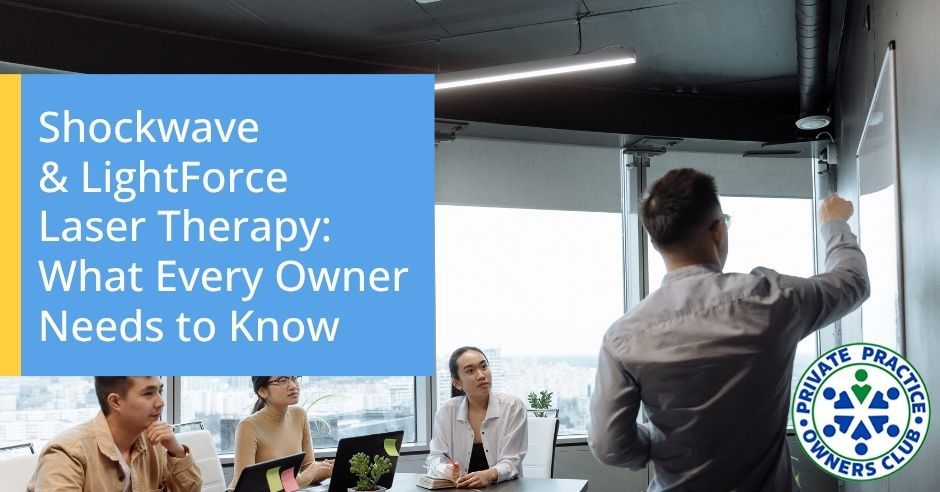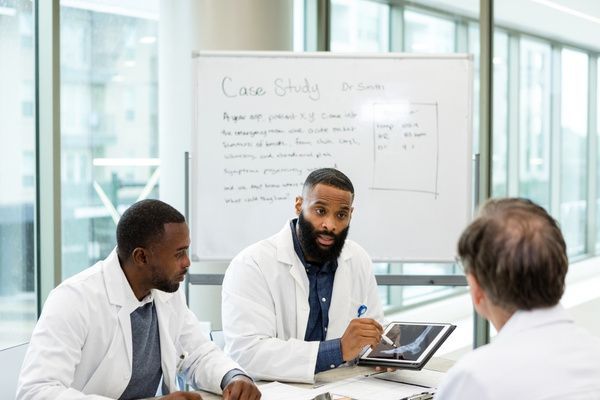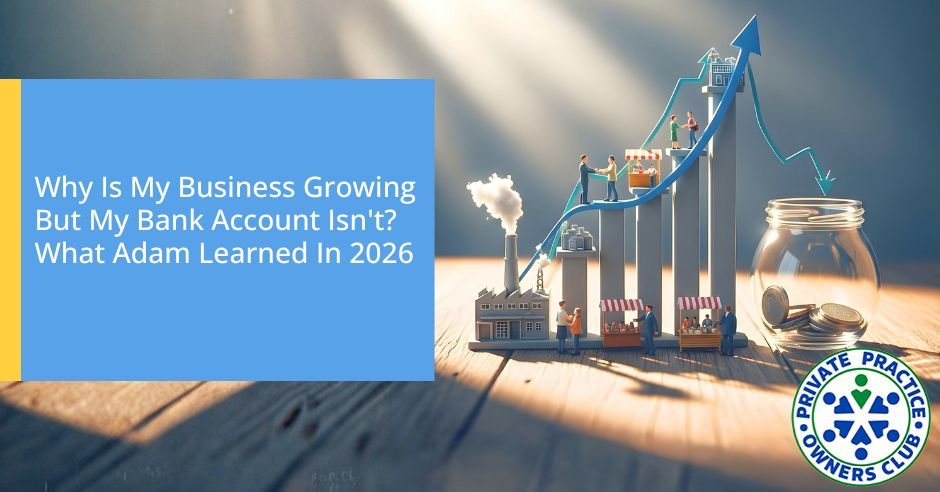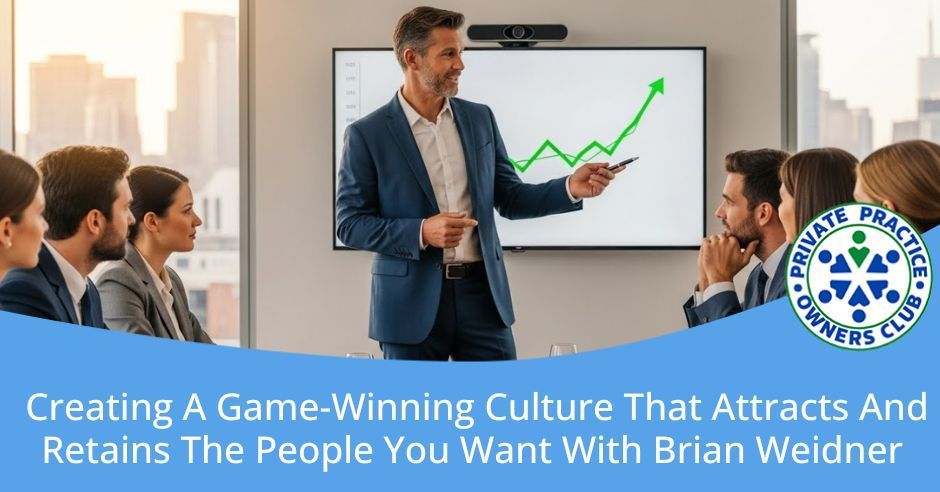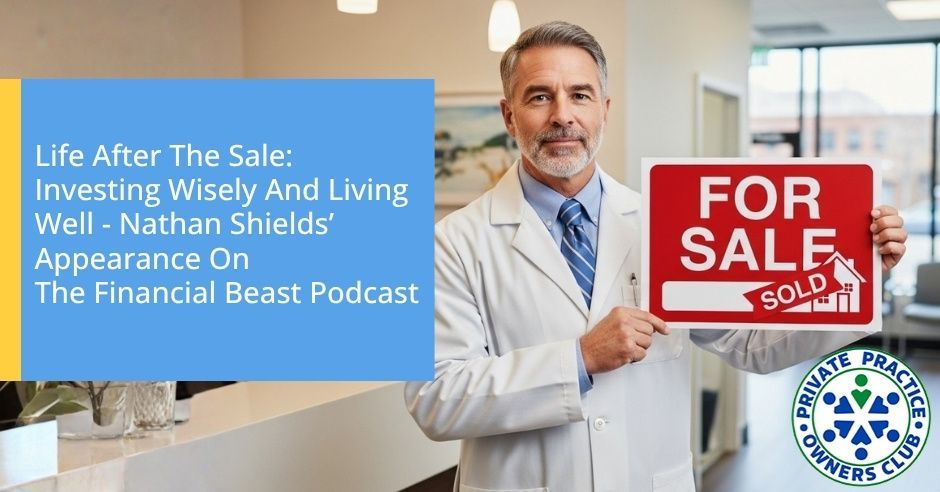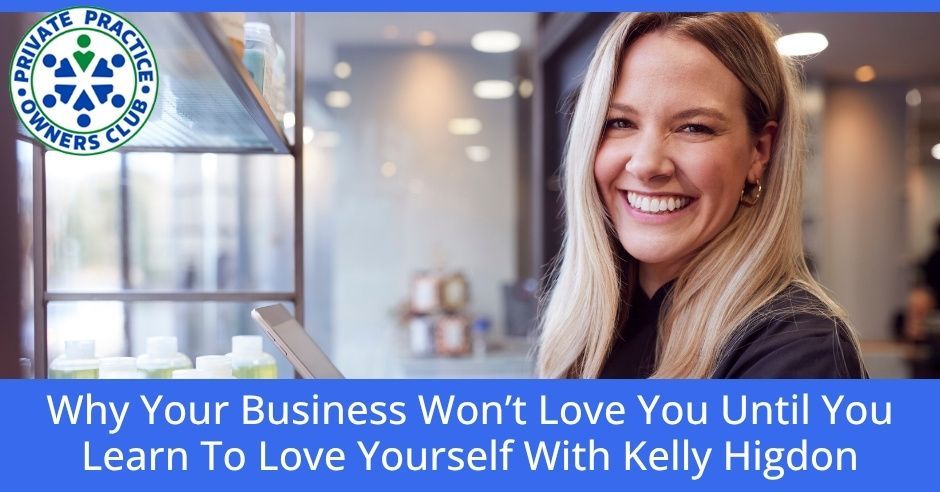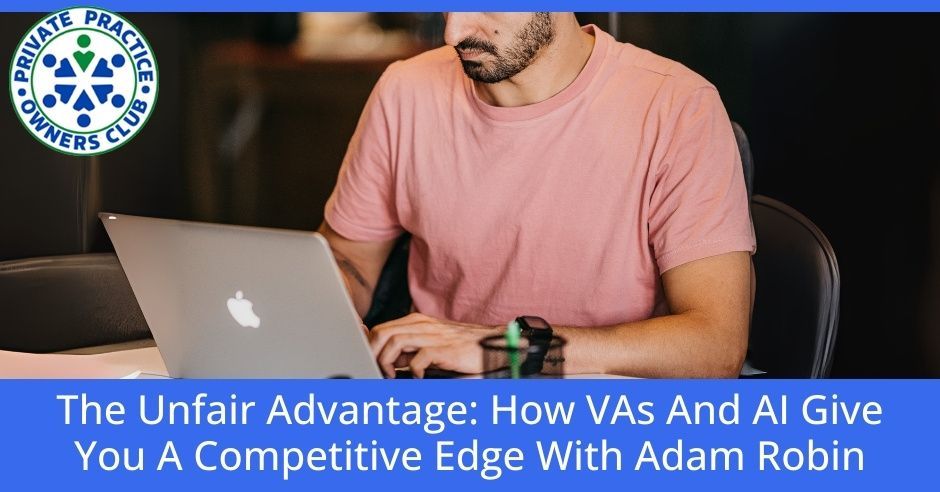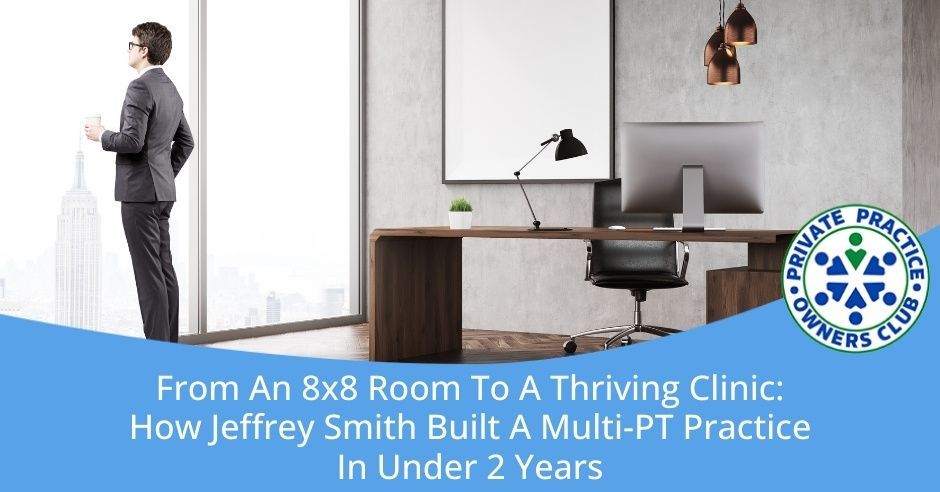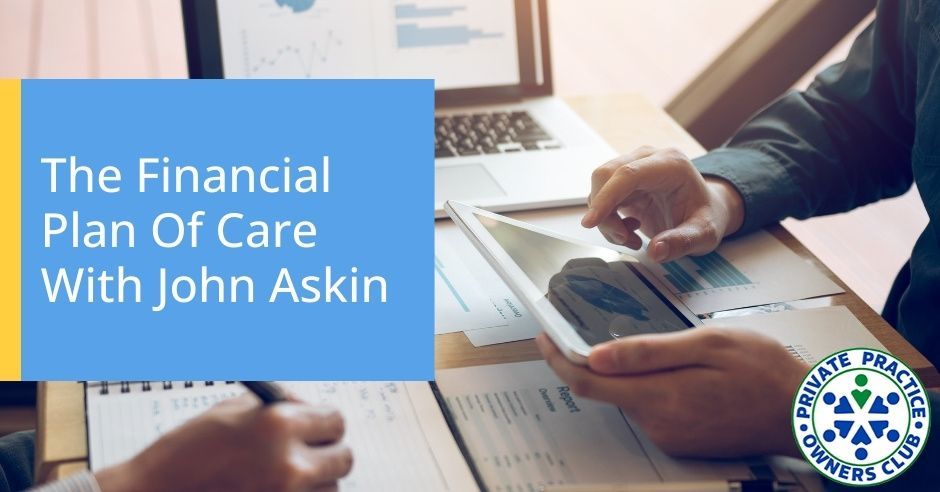Mark Callanen, PT, DPT of
Enovis breaks down the clinical science, real-world applications, and business implications of Shockwave and Lightforce laser technologies—helping private practice owners understand not just how they work, but why they may be worth considering. Nathan Shields explores these two cutting-edge modalities making waves in the physical therapy world.
You’ll learn:
● What conditions respond best to Shockwave and Laser treatment
● How these modalities fit into a plan of care without replacing manual therapy
● Clinical results and patient satisfaction trends
● Key financial considerations: ROI, reimbursement, and cash-based opportunities
● How these tools can help differentiate your clinic in a crowded market
To get more information directly, go to this link:
https://learn.chattanoogarehab.com/ppo-club-jul-fb-live
Whether you're skeptical, curious, or ready to invest, this episode will help you make a smarter decision for your patients and your bottom line.
📈 Want more insights like this? Learn from top industry leaders at our upcoming conference: ppoclubevents.com/homepage
---
Listen to the Podcast here
Shockwave & LightForce Laser Therapy: What Every Owner Needs To Know
Enovis, Chattanooga, And Shockwave Therapy
I’ve got my good friend,
Mark Callanen of Enovis, who is coming on the show. I’ve got a number of questions for him. Thanks for coming on, Mark. I appreciate it.
Thanks, Nathan. I love being here.
For those who are tuning in, you probably don't know who Enovis is, but you have heard of the Shockwave. If you're in the physical therapy world, you've heard of Laser Force.
They have probably heard of Chattanooga, which is the rehab space division of Enovis. When they hear the parent company, they’re like, “Huh?” When they hear Chattanooga, they're like, “That thing that has tables, hydrocollators, and ultrasounds.” Yeah, exactly.
If you've been in the physical therapy world, Chattanooga has been around for decades. That's where all the hydrocollators come from and the ultrasound units. It's good to have Mark representing them. Enovis is a sponsor of the Private Practice Owners Club. You will see them at our event in Destin, Florida, from October 2 through 4. If you haven't registered, you need to. You can't miss this event. It's going to be awesome.
We're going to have a ton of great speakers, great sponsors like Mark and Enovis, and it's going to be a great value for any private practice owners. Make sure you register. Go to PPOClubEvents.com to register. The early bird discount is going into August, but if you're getting towards the end of August, you're probably missing it. You’ve got to register now. That's my plug for it, and let's move on into the conversation.
Mark, I’ve got a number of people in the
Private Practice Owners Club Facebook group that will ask about Shockwave, “Who's using Shockwave? Who's using lasers? What are the benefits? Who's doing it successfully? What do you guys think?” I think this would be a great opportunity to have you on and maybe present what the benefits are to a private practice, and having these modalities and opportunities to relieve patients' pain in their practice, and how it can be most successful. I can take this conversation and share that with people over and over again when the question comes up, because inevitably it does. Talk to us a little bit about where you want to start. Do you want to start with Shockwave, laser, or maybe what these opportunities ultimately provide in general?
A lot to unpack there. Let’s start with Shockwave since that was top of the common pool. It is the fastest-growing modality in the US right now. Our sales are up almost 30% in 2024 on that device. It's red hot in our company. We sell surgical stuff. We sell rehab stuff. We do bracing as part of this. It's the top two product categories in our entire company.
The word is out. People are like, “What is this?” It's been over in Europe and the EU for quite a while. It's standard of care for tendinopathy. If you look at the research underneath Shockwave and tendinopathy, there are hundreds, if not thousands, of hits you're going to see on PubMed. It's very evidence-based. The nice thing is that there aren't a lot of variables as far as dosing.
There's an intensity number of shocks and how frequently you're going to do it when they pare it down. The research is quite tight when it comes to prognostic and diagnostic, and even dosing settings, on what you want for this equipment. It's very plug-and-play at this point. You don't have to try to figure it all out. Within about an hour's worth of a discussion of training, you're going to be ready to roll. The thing is that it's an interesting device. People don't understand it. They've heard little bits and pieces about it, but the name of it, Shockwave, makes you go, “That doesn't sound healthy.” It sounds offensive. You're going to shock this person or whatever. You're putting these high-intensity sound waves into tissue.
It's different from a therapeutic ultrasound, which is a low-intensity, high-frequency wave that creates heat. This is a non-thermal sound wave, but it's a very intense one. Depending on the settings and you can be putting in over 110,000 PSI of pressure that's coming at these cells. It's creating these phenomena of mechanical transduction, which you might hear and go, “What are you talking about?”
If you think about the literature on why eccentrics work or why soft tissue works on chronic soft tissue problems, that's essentially what you're doing. You're putting mechanical stress through soft tissue, which then creates and spurs on biochemical change. This is a device that can do it passively. It's putting this high energy into these cells in this tissue, which makes it respond. The nice thing is that it can reach deep. The focused Shockwave that we saw can reach up to 12 centimeters of depth, which is over 5 inches. You can get about any anatomical structure you're looking for with that.
It's very easy to use. You're just putting it on tissue. If it's inert and happy, it generally doesn't feel like anything. When you find a trigger spot or an irritated spot and you hit it, there's going to be an immediate subjective, like a-ha, you found something. There's not a lot of guesswork involved. You're using it to find things, and then you treat it out for a few minutes. Usually, the subjective will come down significantly in those few minutes because it is a bit of a noxious stimulus. Your descending pathways kick in. Different local opioids will kick in. Substance P gets discharged, and then after about two minutes, the patient says it feels a lot better.
That's the cool part, and that's what I learned when I first got involved with it a couple of years ago. I thought it's pro-inflammatory. That's what you hear as far as the mechanism, and you think, “The person is going to be sore or stirred up after the treatment.” It's quite the contrary in most cases because of what it's going to do to your neuromuscular reflexes and different spasm cycles.
It might be in place. It quiets them down very quickly because you've been packing some of these descending pathways, and the relief lasts for hours. Sometimes, even days, depending on whether you break a pain spasm cycle. People come back after 1 or 2 treatments. They're like, “I feel significantly better.” We're talking about chronic soft tissue problems, too. We're talking about your tendinopathies, your plantar fasciitis patients.
Think about how long it normally takes to move the needle on those people, and you're doing it in a week or two after a couple of treatments. It’s a super powerful tool. I think all those factors, and then the reason why I think it hasn't gotten traction in the US historically, is the reimbursement piece. There are some codes for it, but they're generally not reimbursed by third parties. Our rehab community in the US goes, “It doesn't get reimbursed, I guess it doesn't work,” or “We can't use it.”
If there's a good thing about the downward trend in reimbursement over the last few years, is that we're now really having to look for different methods to bring revenue in the door. Now, this is one because it's not recognized as a covered service. You can charge for it as a cash service. It doesn't mean you have to abandon your third-party billing. You can do that. This is an additive-type feature.
The national average on reimbursement for a Shockwave treatment is between $75 and $180. You can pick where you want to be, but imagine if you're folding in 3 to 4 of those treatments on your tendinopathy patients. You can imagine what that does to your bottom line. It's a nice story all the way around.
Shockwave Vs. LightForce Laser: Pain Modulation Devices
In utilizing Shockwave, it's more for localized pain, especially trigger points. What if it was an issue like maybe frozen shoulder? Would that be more appropriate, or would something different, like a laser, be more appropriate for something like that?
There was some research on that in our review paper that talked about frozen shoulder. You can utilize it to help with that. I think it's probably going to be most effective in that early phase when it's freezing in the first 2 or 3 months of that going on. If you can break some of those spasms. You're still going to walk through the whole pathology because it is what it is on a true frozen shoulder. It can help reduce some of that discomfort on the front end. There is a place for that.
Essentially, anything that you can do to evoke pain, one of the most powerful things it does is it helps spur on better blood flow to the area, both immediately via nitric oxide release. It also helps with angiogenesis. It's going to help lay down new capillary beds and things of that nature. In some cases, you have a chronic scar or a chronic myofascial problem that has been there, and it's not getting a great amount of blood flow. They've shown that you can tune the system up essentially in certain scenarios, which is wonderful. It's very powerful stuff.
Shockwave is the fastest growing modality in the U.S., and it's incredibly effective for chronic soft tissue problems.
LightForce Laser Therapy: Accelerating Healing And Pain Relief
Before we get into more of the reimbursement and how to fold this into your practice and maximize the monetization of it, tell us a little bit about LightForce.
It's another modality category that's generally not reimbursable, but it's been poorly understood early on because it was approved in the US by the FDA in the ‘80s. It was ‘86 or so. It was okay for the low-power devices under half a watt, the cold lasers. There was a lot of research that's out there on those lower-power devices.
They can generally create this phenomenon called photobiomodulation, which is the blanket term for light therapy and laser therapy. That can be produced by an LEDA laser, even an infrared lamp could be considered photobiomodulation, where you're putting light into tissue, and then there's a photochemical change. If you can think about chlorophyll on a plant that's helping take CO2 and convert it to O2, that's essentially a photochemical process.
This is what's happening when you put this light on tissue beneath the skin. It wakes up the mitochondria and causes all this cool stuff to happen that helps with tissue repair and can help impact pain and the inflammatory cascade. These 3D devices were around 2003 or so. The FDA said you could start using these Class 4 devices that were over half a watt of power.
Since then, it's been a little bit of an arms race in the space where people started increasing the amount of power output. We have devices now that are up to 40 watts of power there. Other companies have even more, but more isn't necessarily better because as you get more power, you get more heat. You have to make sure you manage that well on the skin.
If you have a super high-powered device and it's not built very well, it could be intolerable to the skin, or the handpiece can get hot. There are some factors like that. We have some engineers who put our devices together, and you can utilize this high power. It's very comfortable for the patient. It's very comfortable for the clinician.
What you find is that these higher-power devices have been put next to the lower-power devices that look at things like carpal tunnel, lateral epicondylosis, shoulder issues, and plantar fasciitis. They said, “Let's compare the low power devices that put in light at a very slow rate versus these higher power devices that put in a similar dose, but at a much higher rate and a higher intensity.” The outcomes and what it does to their overall scores in the long term are much different with the higher power.
I think it has a lot to do with what it does to pain because it helps reduce pain very quickly. The way it knocks on the door of C fibers for chronic pain and A-delta fibers for more acute pains, but it shuts down that signal for a period of time, which can help restore motion, get better range of motion, get better weight bearing, and different things that are going to start to load that tissue better. It becomes a very homogeneous thing.
We're trying to do that in rehab anyway and say, “How do we get that person moving? How do we get them functional?” These are tools that help break that pain cycle so that they can tolerate more load and get those tissues moving the way they should. It accelerates your plans of care. You get comfortable with how to dose and how to use these things.
I remember the very first paper I looked at when I was still treating patients a million years ago on a Class 3 device, and it said that the amount of treatment time was over 40 minutes. I was like, “Who has 40 minutes? I can't do that.” I was like, “Next.” The treatment time for the LightForce devices is usually around five minutes or less. It depends on the area you're going to treat and a couple of different factors, but generally, you're talking about 4 to 5 minutes of treatment. You're talking about being able to reduce pain by 50% in a single treatment. People get done and they're like, “That felt warm, it felt good, it doesn't hurt as much, and I move better.” It's like, check, check, check.
That's a huge value add for the patient. They're coming to see most therapists because they're in pain. The number one reason people go to physical therapy is that they're in pain. Now, all of a sudden, you have a tool, whether it's a Shockwave or a laser, and you're delivering on reducing that pain significantly on that same day.
Differentiating Modalities: When To Use Each For Optimal Results
That is the secret sauce on what allows cash transactions to take place because the patients are getting what they're there for. When they see how effective it is, how it's non-invasive, and they're not having to take a pill or anything like that, they're usually all in. You then fold it in with other great things that you do, as far as exercise of soft tissue, range work, and all the stuff that we do traditionally. It makes a very nice story.
Both of these are pain modulation devices. What do you tell them if they say, “How do you differentiate the two? Essentially, which one should I go with?” They both seem like they modulate pain. They do so in a localized area. They do great things for the cellular structure and decrease pain, generally. How do you differentiate the two, and how would you recommend someone decide between the two?
The big picture is that they are complementary. You could use them together. They're not combating, where you have to pick the good side or the bad side, black or white. They can work together nicely, but sound waves travel through tissue very well. If you're trying to treat something super deep, sound is easier than light to get to the depth.
If you think in terms of when destroyers are on the surface of the sea looking for submarines, they're not shooting lasers into the water. They're using sonar. They're using sound waves. It's very effective. From a strictly physics standpoint, if you're trying to reach deep things, the sound of the Shockwave is a very effective tool to do that.
That being said, as far as how pain is broken, the Shockwave is a noxious stimulus. You're going to find something that hurts, and you've got to tune it up a little bit. You're usually in that 5 to 6 out of 10 range on discomfort. The patient has to tolerate that for about two minutes until it usually starts to back down. If you have a pain-intolerant patient or you have somebody who's a Nervous Nelly and you put this on them and they're jumping out of their skin, that's going to be a problem.
Would you say that maybe someone with a high Medicare population might not want the Shockwave? Would you go that far?
I wouldn't go that far because you get folks who have been dealing with a chronic problem, and they're fed up. They probably tried everything under the sun, and then you put something on it that identifies their pain. What'll happen is you stick it over their problem, and they go, “That's it. You found it.” You know how valuable that is clinically. Not only that, it's going to change it within a few minutes. Now that person goes from, “I was hopeless. I thought my back was going to hurt forever,” or, “I thought my foot was always going to be sore.” All of a sudden, they see a change within a few minutes. You lit a candle of hope. They're like, “Maybe this can help.”
I wouldn't say all of Medicare couldn't use it. I would say there are certain pain-intolerant patients, and they've done studies to take a look at fibromyalgia patients and people who are pain sensitive. You can still do it with them. You usually have to decrease the intensity a little bit, and that usually requires a few more treatments for their myofascial problems. It's a little bit longer conversation with them because they're going to probably be a little bit more challenging.
Your weekend warriors, even your athletes, people that are active and like, “I want to get back to doing what I want to do,” they love the fact that you can find and locate their problem because they're like, “That's my pain.” The nice thing is that it requires not a lot of training. Think about it from a manual standpoint, how long it takes to be able to localize a segment or to be able to do soft tissue work and get things to release with your hands, or what have you.
You're talking about years of training to get proficient at that. This thing pings the tissue, and you keep moving around until you find it. Once you find it, the only question is, “Is that too much, and is that your primary pain, or is that something you weren't aware of?” You start knocking them down. What's cool is that within a treatment session, you're usually going to knock out 2 or 3 of these types of segments because you're going to have a tendon that's going to be usually a primary problem. Let’s say it's an Achilles tendinopathy, and then there's going to usually be some things in the muscle bellies or the calf that's going to tie into that tendon. You're going to find those problems in the contractile part of the problem, which is going to take less intervention, less pulses, less energy, and what have you.
You get those to quiet down, and then all of a sudden, the muscle and the tendon are moving in the right direction, and people feel a lot better. In some of the research, they miss that point. They'll treat the tendon, and they won't do any of the treatment on the effector source of the muscle itself. Maybe they have a so-so outcome or something, and I always want to throw the paper against the wall because I'm like, “You're missing half the story. Don't skip the muscle.”
People come to therapy because they’re in pain, and now we have tools that can reduce that pain by 50% in just one treatment.
The Shockwave gets deeper and maybe a little bit more noxious. Compared to the LightForce, if they had a large fibromyalgia patient population, would a LightForce maybe be more appropriate?
They'll probably love the laser because all they're going to feel with that is that it's warm, and it takes pain away. Clinically, you have to be a little bit more on the ball as far as being able to locate their problem, treat it in that area, and get it to erase the pain because that's what it's going to do. You have to understand dosing.
Dosing is a little bit trickier because it's not point and shoot. You have to understand how to set the machine up to get the right amount of light into the tissue. Once you're effective at it, it's going to be a similar equation. You're talking about five minutes for the treatment, and you're going to hit the area that's a problem, and they're going to have a significant reduction. I think it's important to point out, because I'm sure as we're talking about the state, there's going to be a handful of people who go, “This stuff is this short game. It's going to trick pain or get people to feel better for today, but that's all it does.”
Maybe I can do the same thing with E-stim,” right?
True. The thing is, there are a number of modalities that can help with pain modulation. Some of them are much more effective than others. Two of the most effective things we have that I would put in there have been proven ahead of certain conditions, like dry needling, as far as changing pain quickly. It does have a lasting impact on the tissue as well. It's not just that you're changing pain, which you are, but you're also changing the tendon or the soft tissue or the muscle that's injured to help it repair more quickly.
By a number of factors, like growth factors to get released, collagen production goes up as far as tenoblast site activity, things of that nature. You're not just gating pain, you're priming the pump on the tissue itself to repair itself in a hastier fashion. It's hard to put a direct number on, “How much faster? Is it 20%?” It’s hard to say. Conservatively, you can imagine if you have a muscle strain that normally takes six weeks to recover, you're probably going to be looking at maybe that's going to happen in four weeks, possibly, as opposed to six.
That's part of the reason that you'll see these devices commonly in pro sports or the high-level college athletic spaces. They're putting these devices on these athletes. When you see somebody go down with a calf strain and you're like, “In my clinic, that would normally take five weeks to get that guy going again,” and you see them playing in two weeks. This is part of the reason that they have this technology to help prime the pump. They're very healthy. The tissue is about as healthy as you'd hope for, and they can treat it around the clock. Without these technologies, you wouldn't see those guys returning to the field as quickly as they do.
Are you seeing LightForce and Shockwave being rather equally distributed between the college and professional athlete space, or is one a little bit more popular than the other for high-level athletes?
I think recently, Shockwave has been getting a lot of attention. We've been in the pro and the college athlete space for a long time. We dominate that market. We're the number one laser globally. In pro sports and in high-level college sports, we're the biggest laser company there. We have a level of saturation to a degree there. Shockwave has been the up-and-comer. There's a lot of buzz about that. There's a lot of talk about, “What's that about?”
As far as numbers across the space, we probably still have more laser placement in that pro field than we do shopping, but it's starting to equate because they both work well. I would say on the differentiation between the two products, because they're both great, is that one thing about laser is it's super versatile in the way it addresses pain from both chronic and acute states, as well as you can treat over metal with it, so total joints and things of that nature are no problem.
It's so versatile. You can use it on every patient who's in pain. From a versatile standpoint, from the acute to chronic, on any type of tissue that has mitochondria, and if you get light to it, you can probably impact it. From a versatility standpoint, ease of use, comfort for the patient, the amount of people who are going to say, “I don't want to do that,” but it feels nice, and you get done with it, and they're like, “That helped.”
It's a piece of cake as far as implementing it with patients. I think that's an important piece. The Shockwave is very good, but generally, it's going to be bent more towards your chronic problems. Chronic soft tissue, even subacute things, it's going to help with pain, and you can use it for some acute things, but generally, it shines with chronic tendinopathy.
If you would say, “I’ve got a running clinic and I got plantar fascial patients in chronic tendinopathy in the lower leg and knee all day long, maybe from an economy of scale because you probably can get away with a few less treatments on the Shockwave than you might with the laser because of how it does its job. You're looking at probably somewhere between 3 to 6 sessions for Shockwave, whereas for laser, it might be maybe on average 6 to 10, somewhere around there, depending on how chronic the problem is.
If you had a practice where you're like, “I see people once a week,” like I know some cash pay practices that are like, “I don't see patients all the time, they come in once a week for me,” Shockwave is a very good answer for you because you can pound the tissue on Monday and then say, “I want to see you next Monday.” That's a perfect cadence for that type of modality because it's usually once a week for 3 to 4 weeks, and then you're done.
Depending on how you see your flow, that could be a potential. What I would say is the best thing you could do, try them both out. Get one of our reps to come down to your space and say, “Let me see you work on these 3 or 4 people that I’ve been working with and let's see what happens,” from a trusted source, trusted patient you've worked with them for several weeks and go, “I’ll believe it if they tell me because they're definitely going to give me the straight shot.” Try them both and see what you see because they'll be the ones who can tell you the story.
Monetizing Modalities: Maximizing Practice Revenue
I appreciate that further differentiation. That's very helpful. Let's talk a little bit about what you've found that owners need to do in order to make these successful services within their practices, because we're not billing insurance for them. They're not at least reimbursed by the insurance companies.
They've had to charge for them on a per-visit basis, per-treatment basis. How do owners do that successfully to make it worth the investment, not just to get better patient results? That is the ultimate end goal, but we also don't want to lose money on the effort. How do they make it a successful program by introducing these things?
I think people have to look in the mirror and realize that most physical therapists are horrendous at asking for cash from their patients.
Asking for any money, we would rather swallow our pride and say, “I’ll take less,” than ask for more. This is true.
“Do you want my shirt? Would you like to start for free? Can I come to your house and continue treatment?” We have to understand that it is a soft spot for our empathetic professionals in our space. If you mention that you're going to bring a new device into the space and you go, “We're going to start selling Shockwave or start selling laser,” you're going to generally get the frowny faces from your staff pretty quickly.
“Did you say sales?”
I think what we do a nice job with Enovis and Chattanooga is that we help frame that conversation. We have scripts, we have ways to present that to your staff. We have coaching that we can do to show them, “You're not selling, you're recommending, and you're trying to have a patient in front of you and say, ‘Here's my recommendation for your best plan of care.’ If you do all these things, it's going to help you reach your goals as fast as possible and get you on track.”
When you say that to an open-minded clinician, they're going to go, “That's what I do every day.” The biggest hassle here is going to be for you to modify your normal flow of how you treat a patient to get used to how to incorporate this. When you're changing practice patterns for any medical professional, that's a big ask because everybody says, “I’ve been doing this for however many years. This is how I do it.” If you're asking to change how they do it, you'd better have a pretty good reason why you're asking them to do that.
Without these technologies, you wouldn't see those guys returning to the field as quickly.
I think the nice thing is that when you put these devices in front of these clinicians who are going to give it a fair shake, they see very quickly, “This is a difference maker. This changes how this stuff works. It works very quickly, more so than I’ve been able to do with my own hands or my own different procedures.” That's a piece of it, how to present it to that person. You're also going to have your 1 or 2 clinicians that are going to fold their arms up and go, “I don't believe in modalities. I don't need it. My hands are great. My exercise plans are bulletproof. I don't need any of that stuff.”
For those folks, I have a nice chunk of research that I can help share with owners to go, “Exercise does work for tendinopathy, but look at this paper and this paper that shows when you add these modalities, you get better outcomes.” It's not like it's 1 or 2 studies. There are several. They can start to digest the research and go, “It looks like there might be something here.” Ultimately, it's about putting it in front of them and maybe putting it on themselves so they can feel it and sense it and start to go, “Okay.” That's usually the biggest fear I hear from owners. “My whole staff isn't going to want to do it.”
Guess what? That's every practice. There's going to be that one squeaky wheel, usually, that you're going to have to address. The good news is that we've addressed that hundreds of times. We know how to come to that and how to give some tips. We can get as proactive as we want. I’ve talked to the whole staff before at a meeting where the owner was like, “I can't get through to them. Can you talk to them?” Sure.
We huddled up at a meeting, I had ten people around the circle, and we went at it, and it was fun. Other people are like, “I got it, I need a couple of papers, and I can handle it.” No sweat. Whatever you need, we can help on that front. The ability to understand how to structure the price and how to make that all happen is nuanced. A lot of companies will sell you the device and then say, “Good luck.”
Where we’re differentiated is on the after sale and making sure that people know how to put those programs together, how to market it, how to have your front desk meet somebody, and talk to them how to sign the agreement, how to get six sessions, or at each session, they're paying without it being awkward. We handle all that stuff. You find that when you round off those rough edges on all those different friction points, then it all starts to work well. The reward for the owners is that if you do it well, you have to have a device that stands up and can perform day to day.
That's very important because the worst thing you can do is invest in this whole process and then put it around a product that's going to break down a lot and not be reliable. That's very bad because you've had people pay for this service. Now, you're like, “Sorry, I don't have it right now.” They're going to be like, “Excuse me, you can give me back my money.” It's important that you have a reliable platform.
It's also important that you have the support when there are some rough spots that you can get those questions answered and keep the ball moving forward. You see in the successful clinics, they're generating $4,000 or $5,000 a month doing these programs, and it's all low-hanging fruit. For the most part, it's people who are there already.
Overcoming Sales Hesitation: Engaging Staff And Patients
They're patients that are in front of you, they're in pain, they have tissue that needs to be addressed, and you now can reach out to them and say, “I’ve got a solution for you.” The ramp time usually is very quick, as far as getting revenue generated from these programs. It's not like, “You're going to have to wait 90 days or 120 days for it to start to come together.” You start looking around at your current patient base and go, “Do you want to give this a shot?” You do a trial and say, “Tell me if you think it helped you.” They go, “Yeah, that helped a lot.” “Do you want to add it?” “Yeah, I want to add it,” then you're off to the races.
As I'm thinking about those who do it successfully, at least some of the hurdles I see or I hear about, and also what I know from experiences, what you said is that it's a change of protocol for many providers, and they like their routine. They don't want to mess it up. They know what manual skills they're going to implement or what exercises they're going to use, depending on the diagnosis and the state that the patient is in. They get into a groove, and now you're somewhat disrupting that a little bit.
Some providers might hide behind the “This is just a modality, I don't use it, I don't trust it.” They might say they want the research, but even if they got the research, they probably wouldn't change all that much. That also could go to another thing, and maybe it's multifactorial in that most of these owners are coming to teams with changes quite often. This could be a shiny object syndrome kind of thing, where teams might be a little bit fatigued from that, or think, “Yeah, we'll do this. We'll play your game for 60 days and then we'll forget about it.”
You made me think of a saying I heard once that the only people who like change are wet babies. You’ve got to ask your staff to change what they're doing, and they're going to say, “Here we go. This is the third different thing. We got a new EMR, we got this new thing, we got this new process.” There are ways to grease the skids, and some owners will provide some profit sharing and say, “For every program you do, you're going to get 10%,” so there can be some financial incentive for your staff.
That can work, but I’ve managed hundreds of clinicians at a time, and what I would say is the consistent pull through with most clinicians, the fuel that they get is in their outcomes. If their patients are coming back with a smile on their face and going, “You helped me out. Whatever you did last time was awesome,” that's the kind of thing that keeps the win in their sales. That's the thing that keeps the staff motivated.
They're like, “I’ve spent all this time and effort learning how to get people better.” I love hearing these people come back and say, “Thanks, man. What you're doing is helping me with my life and my goals.” These tools do that. They help make you better at pushing that button, where people come back or even on day one, going, “I feel better already.” The thing that goes without saying is, imagine you're getting people to feel a lot better on day one. What's that going to do to retention rates? What's that going to do to our chronic problem of patients self-canceling? I think over 25%, almost 30% of our patients self-discharge in PT.
If we could cut off 3 or 4 points of that, when you talk to people about profitability, I'm sure you guys do anything in your talks, if you can clamp down on your cancellation rate, that in itself can be something that generates thousands of dollars a year for your practice. Without touching your schedule, without touching your EMR, without pinging somebody with a text message, if you do a better job at getting their pain to go away, and by the way, if they hand you a credit card for $200 or $300 on the front end of their plan of care, they're galvanized. They're going to show up for their sessions because they've now invested in this. They believe in what they've heard, what they've seen. If they've bought 6 sessions of laser or Shockwave, they're going to be in to use all 6.
All of a sudden, now your cancellation rate goes from 13% to maybe 9% and you go, “Schedule is a lot fuller, and I'm making more money by charging 30%, 40% of my patients. It’s giving me an extra $300 to $400 for their plan of care. That's helping me a lot. I'm making a lot more money because my schedule is completely full now.” All these things are good things. There are a lot of secret factors that will generate more revenue for your practice that are a little bit more hidden for things like that.
Overcoming Hurdles: Successful Implementation Strategies
These practitioners are typically doing their normal routine treatment and then adding this on top of it, so they can still get that insurance reimbursement, plus this added cash bonus. I'm assuming, for a matter of specifics, for your Medicare population, they probably have to sign an ABN to do this.
Yeah. I highly recommend it.
Do they sign the ABN and then move forward?
I would recommend that people generally sign an ABN. It takes away all that pushback. If somebody says, “I didn't know you,” we were up front. Even if you make a modified version for your Blue Cross patient, I think it's a smart thing to do.
Our mutual friend Tony in Florida, who connected the two of us, has been super successful with the implementation. He has LightForce. He doesn't have Shockwave, I believe.
I think we're talking to him about Shockwave. He's been so successful with his laser. He has multiple lasers in his facility.
He's got 3 or 4, at least the last time I talked to him.
You're not selling, you're recommending.
He's the gold standard if you go all in. I believe that in 2024, his program from laser generated over $400,000 in cash. That’s not counting all the other stuff he's doing or his revenue from the visits or anything like that.
I think he has 3 or 4 clinics at this time. He has a laser at each one, and he's done a good job of implementing it. That is part of the program now. If you're going to go to his practice and you've got some localized musculoskeletal injury or pain, you're going to get LightForce. He does do that little trial thing. Maybe at the initial evaluation, they say, “This is a component of our care.” They try it. They probably do it for free many times on that initial evaluation and say, “Let us know how it goes.” If people say, “It's great,” then he is like, “We've got this 5, 10, and 15 treatment package that you buy up front, and if you're interested in it, we'll do it.” I think he's probably made it a thing.
We've been around the water cooler long enough. We know that one of the taboo words for a physical therapist, especially as the TPT grew, was the work protocol. You mentioned protocol, and all of a sudden, everybody's defenses go up like, “I don't want to be told what to do. I'm a doctor.” What we recommend, what Tony has embraced, and what you're pointing out is that you're setting an operational protocol for this device.
You're saying, “I'm not telling you what to do with these people. All I'm telling you guys is that this is part of the flow of our center.” On visit 1 or 2, or however they've got it figured out, everybody gets a trial of this device to see how it feels. The value proposition that they're putting forward to the patient is basically, “Just give it a shot because I think this is going to help you. If you tell me you don't like it, or you don't think it helped, or it's all voodoo, no cost. I’ll eat it. That's how confident I am that it's going to help you. However, if you feel it did help you and you’d like to add this to your point of care, it's going to be this much extra on top of your copay and what have you.”
You leave it up to the patient, and you let their results from that trial speak. They're going to say, “I think that helped a ton. I want to keep doing that,” or they go, “I didn't.” You're saying, “Okay.” It's a win-win for the clinic because you're not forcing it down anybody's throat. You're not saying, “If you don't do this, then.” It's literally, “You tell me. Do you think it helped?”
You can imagine if you're a consumer, if you went to any store or whatever and they said, “Try my product and if you don't like it, give it back to me and go home. It's fine.” It's a position of confidence. It's a position that will build trust. That's the thing that most people don't understand. What you have to do to get great adoption across your patient population in your clinic is to incorporate it from an operational standpoint.
I know PPO Club does a great job at talking about your operations, getting those standardized, putting things down in writing, and doing things that you know how you're going to do your day-to-day. You add this to that. When you do that, all of a sudden, people are like, “I'm making this investment, but I'm doing it because I think it's going to be a good thing for my patients. It's going to differentiate us from the market.”
It's not something that's up for debate. It's just what we're going to do. You give people the why, and you let them experience it, but you're not asking for permission from your staff. You're explaining to them why, and you put it into motion. Maybe there's going to be somebody that digs their heels in, and if they do, you go, “Maybe you're not a good fit here.” Owners usually throw their hands up, “It's a shortage of therapists. What are you talking about?”
The reality of it is sometimes people aren't going to want to play ball, and you have to have some of those hard conversations and go, “This is my boat. This is where it's going to go. You're either on it or you're not, so let's go. If not, I understand, I respect it.” I think I even heard you guys give it a story like this. “I respectfully understand where you're coming from, but that's not where we're headed. Maybe we've got to part ways,” and you'll save yourself a lot of heartache sometimes if you can cut that quarter early.
Overcoming Reimbursement Challenges: Direct Payment Strategies
I love how you tie that into how we can incorporate it because, again, it's obvious that some of these modalities can do great work for our patients in decreasing their pain. The hard part for owners is, “How do I get reimbursed for it?” It's a change. It's not your typical procedure to bill the insurance company and get the reimbursement. Now you have to get payment directly from the patient.
That's different, but once you get over it and operationalize it, it can be very simple. It's like, “Try this. Did it work or did it not? Okay, you liked it. This is our program if you want us to continue to include it. If not, we will continue to provide great care, but it is something that we could provide if you are interested.” You let it speak for itself at that point. You don't have to sell it.
I’ve talked to owners who are so close-minded. They're like, “I have to bill four units for me to make this work. I’ve built my whole schedule around four units. If I'm having to carve out 10 minutes to do laser, then I can't charge 4 minutes because of the 53-minute rule.” It isn't going to work. You have to remind them, like, worst-case scenario is that you can't do it as an additional charge to your four units. Let’s say you have to carve off one of those precious units, and now it's your billing three. If the fourth unit was going to reimburse you $23 and you're collecting $50 for this service, where you're getting cash, you're still ahead.
I swear, they look at you and it's like, “Huh.” Do the math. If you collect an extra $20-something for that session because you're replacing the $23 with a $50 charge, you're still ahead. It's a matter of how far ahead you're going to be because there are going to be a lot of times you can make it on top of the four units when somebody comes later. I’ve gone round and round with some owners about this concept, and they have to stop. I'm like, “Just let it marinate. You're still winning.”
“I'm not trying to lose you money.”
You're still ahead.
Thanks so much for explaining the differences between the two and how people can use them to be successful in their practices, and be an added support and revenue source. Is there anything else you want to add on top of what we've already discussed?
I think you’re going to have links, so they can click on them. That's an easy way to get ahold of me.
We have a link to connect with anyone who wants to learn more about Shockwave, LightForce, Chattanooga in general, or DJO, like you mentioned.
Our website is ChattanoogaRehab.com. If you go there, you can look up some information on Shockwave or laser. We're in the process of trying to make one big, wonderful website. You'll be able to jump on that. It won't be pointing you in 2 or 3 directions. If you wanted to go to LightForceMedical.com, that has my whole history of webinars that I’ve done with different people, different voices, different topics on the science side of this versus the cash side. If you want to get a deeper dive, it's all in there. You could check it out. There's also a bunch of good information and research abstracts, things that you can look at if you want to nerd out with the research side of it. That's a little bit easier to find on there.
I’ll send people that direction. Thanks for your time, Mark. It was good to see you.
I'm looking forward to the big event later in Florida. I think it's going to be fun.
It'll be great to see you on the beach in Florida. That'll be awesome. Thanks for coming to Nashville, and I'm sure we'll see more of you.
Absolutely. It's going to be a good time. Thanks, Nathan. I appreciate it.
Thanks, Mark.
Important Links
About Mark Callanen



